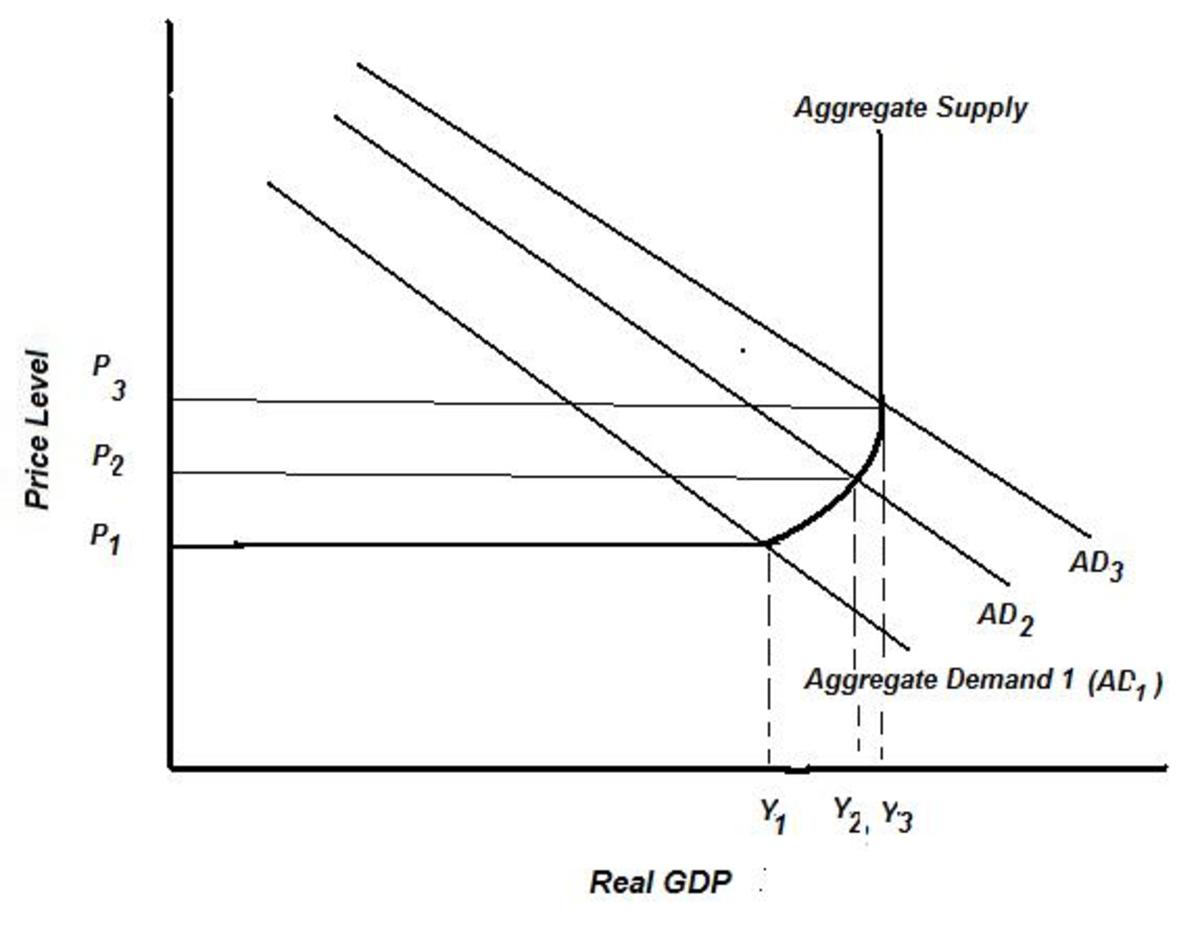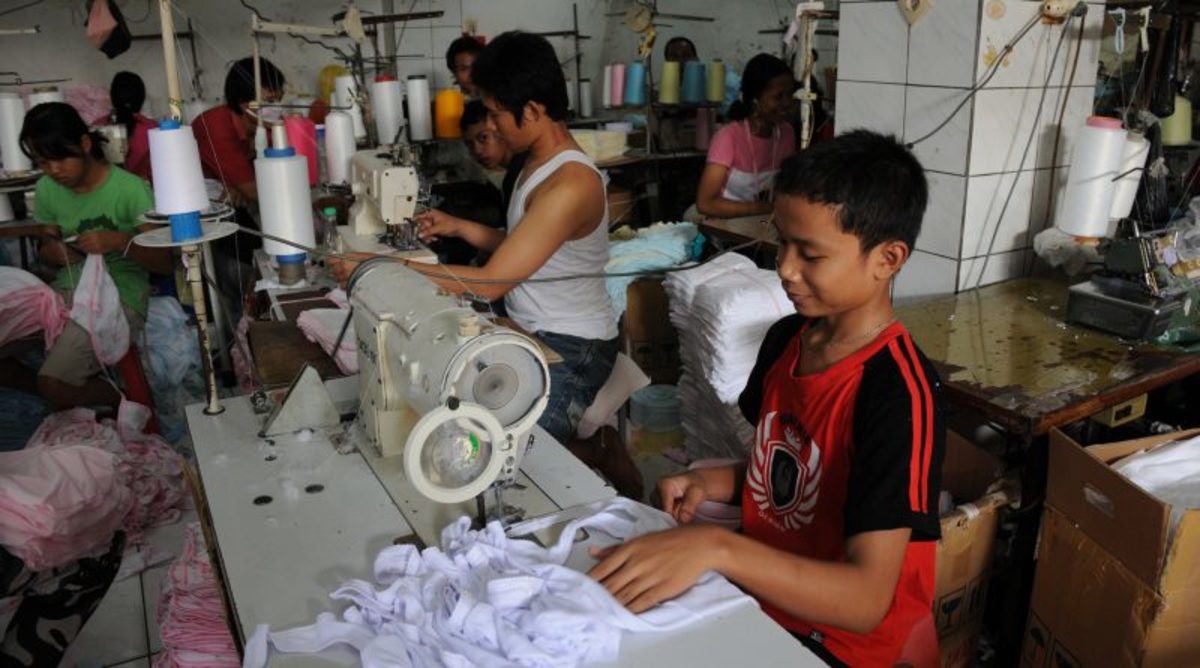The Comprehensive Overview of Health Economics : The Economic Relationships of Health Care
The Comprehensive Overview on the Principles, Concepts and Applied Theories in Health Economics: The Economic Relationships of Health Care
In order to understand the role of economics in relation to health care, we have to understand the basic structure and functions of economics. The concept of economics is concerned with describing the interrelationship between different individuals and organizations related to production and consumption of goods and services. The main point of the study of these interrelationships is to explain how the institutional framework and the rules of behavior specified for the individuals and organizations influence the final outcome.
1. The economic need of the individual for health care is more on the concern of medical treatment .Hence, the idea of consumption explains the health care services provided in the medical care centers (hospital and clinics) and the medicines for the medical treatment and recovery on health.
2. The organization provides the health care services for the confinement of the patients. The public health sector provides the infrastructures such as hospitals, health clinics and other medical services while the private health sector provides highly competitive medical centers on quality health care to attract the different individual to avail the health services.
Economic Relationships of Health Care
1. Economic Production. .It is the creation of manufactured products and services that has market price and value which is being created by the economic demand in the society. This is consider as economic suppliers and producers with other terms such as traders, proprietors, investors, capitalists, and managers.
HEALTH CARE : The production and investment side of the establishments of hospitals and medical centers with the complete facilities, equipment and amenities for the quality health services. This is the cost of production for health care services to provide the medical diagnosis and tools to identify the medical problems of the patients.
2. Economic Revenue. It is the income produce by the selling of particular products and services in the market. This provides information about the projected income, assets and liabilities, profitability indicators, including Cost-Benefit Analysis or Ratio(CBA), Cost Effective Analysis (CEA),and Cost Utility Analysis ( CUA.)
HEALTH CARE : The hospital and medical centers are establish to provide quality health care for the substantial health demand. The revenue of the health care services are the following:
a) The user fee for the health care institution- The confinement, medication and treatment in the health care institutions (hospitals, clinics and medical centers) through the room rate, accommodation, medical diagnosis, and other amenities .
b) The use of medical facilities and equipment – The medical diagnosis such as x-ray radiographic equipment, sterilizing equipment, operating room instrumentation, fetal monitors, infant incubators, ecg instruments, ct scans, and other medical instruments. This is included as the operating revenue of the hospital.
c) The use of drugs for the medication and treatment of the patient and the establishment of drugstore section. The hospital provides the drugs and other medicines for the patient. This translates as the revenue as medicine is part of the product of the health care institution.
d) The physician’s fee and the medical care provided during the confinement, consultation and treatment in the health care institution. The physician provides the necessary health care support in the medical diagnosis and treatment of the patient.
The medical revenues provide the general income as the result of the collection of user fees for the medication and treatment in the hospital. The profitability of the hospital depends now the number of patients being confined and treated in the hospital.
In public sector, the financial subsidy given by the national government for the operations of public hospital, and health programs are measured by the effectiveness in relation to the prevention and control for the possible increase of patients from the target clients on this health programs. This is computed by the CEA and CUA.
3. Economic Distribution. . This refers to marketing strategy to identify the economic demand and supply. The economic distribution designates specific market delivery of the manufactured good to the potential consumers, customers or stakeholders.
HEALTH CARE : The potential market of the health care services is the use of medicines and the treatment of the patient. The economic distribution on health care relates on the geographical and territorial unit of the local government for the public health institutions. However, for the private hospital depends on the demand on health care that is usually in the urban areas wherein you can find various hospitals and medical centers. The increasing number of hospitals and medical centers may result to the increasing market delivery on medicines for the drugstores and medical equipment.
4. Economic Resources. The economic resources are the processing of producing good and services that satisfy the human needs and wants of the society. The broad categories of the economic resources such as labor, capital, entrepreneur, and natural resources.
4.1 Labor. . These are the workers, supervisors and managers who used their physical and mental effort to produce good and services in the society. The productions of goods cars, appliances, computers, air condition units, canned goods and other market products are created by services of factory workers and personnel.
HEALTH CARE : The medical personnel and staff in the delivery of health care services such as physicians, medical specialists, nurses, attendants, and other.
4.2 Capital. The needed financial resources to pay the materials, labor, equipment and facilities, machineries, and other related expenditures in order produce the specific goods and services in the market
HEALTH CARE : This is the hospital investment that may be derive through the equity of the hospital owners, and loans from the commercial banks.
4.3 Entrepreneur. The entrepreneurs invest the “save money” for self-interest to earn more from the income through ‘profit”. When the entrepreneurs organize a corporation, partnership or single proprietorship to produce the market products in the highly competitive world must see to it that the enterprise would work to earn profit.
HALTH CARE : These are the owners of the hospital, it can be classified as corporation ,partnership or even single proprietorship.
4.4 Natural Resources. The transformation of the natural and mineral resources including the land for the production of good and services with the corresponding monetary values.
HEALTH CARE : The location of the hospital including the needed material goods for the health care services.
5. Economic Sectors . These are economic institutions that are providing good and services for the society. It can be public sector or private sector in the management scarcity of resources. The public sector provides the needed public goods and services for the pro-poor programs such as the establishment of the hospitals or schools. Likewise, the private sectors exist on the “self-interest” for the profit on what is invested by the proprietors.
HEALTH CARE : The establishment of hospital to cater the needs of the poor. The rise of medical centers and private hospitals as the increasing need of medical demand from the middle class in the urban areas.
6. Economic Good and Services. It is derive from the economic demand as to the satisfaction of human wants that is being produced in the market.
Economic Demand The economic demand derives from the human needs and wants based on the capacity to purchase certain goods and services in the societal market. In this sense, there are two conditions to meet the economic demand : (1) the willingness to buy the products; and (2) the capacity of paying the amount for that particularly products. Economic Demand
The economic demands are assumed to be unlimited-because survival of human being reflects on the basic needs such as clothing, shelter, education and other physiological needs. This is the reason why there is no end to consumption needs. We need to produce the following in order to survive:
1. clothing - shirts, pants, underwear, sweat shirt, and etc.
2. food -fish, meat ,chicken egg and vegetables including water and canned products
3.shelter- house, hotel, apartelle, apartment and condominium
4. education- elementary education, high school education,and college education
5. health- medicines, hospitalization and medical check
Economic Supply.The concept of supply reflects on the goods and services needed to produce in a given market. It is more on the production of goods and services to satisfy the increasing needs and wants of the society. The main player in the study of economic supply is the entrepreneurs; the other terms are businessmen, capitalists, supplier, traders or investors.
The economic resources are always scarce in supply. We need to produce clothing, food, shelter, education and health. In clothing you can simply produce shirts or pants the resources such as a tailor (labor), garment (raw material), sewing machine ( production equipment) and factory ( land and building). There are specific cost in producing shirts and pants such as wage for the tailor, per yard cost of garment, unit cost of sewing machine and electricity for its operation, and the rent or loans paid for the construction of the factory.
HEALTH CARE: The demand of medical care focuses on the consumer demand. The confinement or treatment of patients is the example of economic demand. It is also the presence of the medical inputs in curing illness or disease of the patient such as medicines, laboratory facilities and equipment and other tangible medical products. While the economic supply of medical care is the presence of hospitals, clinic and medical centers that provide medical services to the patients who have problem about their health.
At this level, it should come as no surprise that health economics may be viewed as the economic discipline which deals with the institutional frameworks for health care (consumption, provision, financing) and the interconnections between rules and institutions on the one side and the resulting health condition in the population on the other. There still remains a somewhat loose description of the field, and it seems difficult to get closer in a few words. It may be emphasized here that health economists do necessarily deal with cost-effectiveness analysis or benefit-cost ratio analysis of health management. However, that is not the only task of a health economist. Rather, cost effectiveness is perhaps treated as the least important aspect of what a health economist can contribute.
HEALTH CARE : PUBLIC HEALTH PROGRAMS
The health care services are those activities we can get from the treating of patients in the hospital or clinic which they need to pay the hospital expenses such as physician fee, laboratory fee, hospital room fee. medical and medicine expenses. The health condition is the reason for the existence of hospital because of the presence of illness and it should treated properly once they are confine in the hospital.
Take note that in public health program your health care service is measured on the benefit of individual in absence and treatment of diseases. The economics of health welfare has significant role in the development of the health society. The health sectors can also be measured along the medication or treatment as it has financial value as to the health cost and benefits. The specific cost of the health care treatment is measured through Cost-Effective Analysis, Cost Utility and Cost-Benefit analysis which will be discussed in Economic evaluation. The use of fund is effective when you can treat more patient and there are many patients being serve from than financial fund use in the project.
HEALTH RESOURCES AND ECONOMIC GROWTH
The developing countries have problem in supporting the health resources such as the existence of enough physicians and hospitals, medical centers and primary health care centers. Why?
The significance of health economics in developing countries ( these are the countries that are not fully developed or industrialized just like Burma, Afghanistan, Cambodia, Vietnam, and other countries in Africa and Asia we may consider Philippines and India under this level). The developing countries have problem in supporting the health resources such as the existence of enough physicians and hospitals, medical centers and primary health care centers.
1.Economic climate where resources are extremely scarce and decisions on priorities are crucial but difficult. The economic climate reflects on the economic status of a country. The limited national income created a problem in supporting the basic health services such as producing more primary health care center, hospitals and medical centers . They give priority in health services to reduce the health problem for the communicable and non-communicable diseases, however, it is difficult for them to provide these services because of limited budget and funds to construct hospital and primary health care.
2. A growing appreciation among health professionals and policy-makers that health economics and economists can help them formulate policies and make decisions. The health professionals and policy maker( such as congressmen, legislators and health officials)are also interested and appreciated the complementation of health economics and economics. It is already here that they could study further the cost of medicines, hospitalization, medical consultation for their return of investment in putting up hospitals and clinics. The prevention, rehabilitation, and promotion of health may study further through its utility and effectiveness of a given health service program. The use of financial resources or expenses of a particular illness or disease may further studied as to the Cost-Effective Analysis or Cost Utility Analysis which means that you can also translate the health expenses incurring a particular disease or illness.These are quantified to analyze by the expenses incurred in medicines, hospital bills, consultation fee and other medical expenses.
HEALTH POLICIES
The economic activities provide some sort of regulation and policies to promote the general welfare particularly in buying manufactured products. Let us take the case in manufacturing cigarette products, the health department provides specific policy that the labeling of cigarette must put note or label that “ Smoking is dangerous to your health. The reduction of smokers means lessening the burden of the health sector on the risk of lung cancer, tuberculosis and other cancer diseases taken from smoking cigarette.
Likewise, the regulation on quarantine and monitoring of individuals with illness or diseases on AIDS,HIVS, SARS and other deadly diseases. This will prevent the spread of the sexually transmitted as AIDS. There is also health policy to have medical check up in employment and going to other countries.
There are many health policies formulated to prevent illness or disease which may reduce the problem for health expenses in the hospital.For example the study of Economic Evaluation which simply knowing the expenses of a particular illness and the possible cure of that illness .If you provide immunization then you can possibly save medical expenses of patients. The prevention of illness is the result of the immunization program.The Health Technologies that facilitated to the early cure and recovery of patients in the hospitals.
The growing of interest among economists and others in applying their economic skills to health issue. The economists are now integrating concepts on the demand and supply in the health sector. Likewise, health issues are synthesize within the perspective of cost of investment and the possibility of curing the patients.
The Economic Relationship in the Formulation of Health Policies
There is usually the assistance by the economist in the formulation of health policies on the basis of economic demand and supply, the measurement of cost and benefits and other economic variables on the user fees of health services.
Primarily, the economist might assist in the form of demand studies and policy makers’ preferences to formulate specific health service policy. In economics, the demand studies are conceptualized along the need of health services for the people. It is oriented on the direct medical care given to poor patients in the hospital or clinic. The demand studies are therefore given as health data such as on mortality rate, morbidity, fertility, the prevalence of diseases and illnesses, including Human Index Development (such as life expectancy, nutrition intake, and other health related variables).
These are important data by policymakers to come up specific regulatory measure to either prevent or control the spread communicable and non-communicable diseases. As good example of health policy is the regulation and quarantine of diseases such as AID/HIV, SARS, Birds Flu, Salmonella contamination and other diseases. The inspection and regulation by the Bureau of Food on the health products and other canned goods; the health programs to reduce the prevalence of dengue, TB, malaria, rabies, cancer, and skin diseases.
Secondly, the economist can provide assistance in the measurement cost in delivering health care services and the real costs on the health system. The poor patients are given medicines to treat their illness in the hospital. The medicines given to them are being studied as to its real cost such as the price of the medicine, effectiveness of the medicine, recovery of the illness after taking the medicine, the medical diagnosis and check up of the physician and cost variables of the medicine. This will specifically determine the regulation and specific policies for the regulation and monitoring as to the cost of medicine and probable estimates on health and medical expenses of patients in the hospital. A good example of this health policy analysis is the generic law, regulation of medical diagnosis fees, regulation of the prices of medicines in the drugstores and other related health policy researches to integrate the study on the real cost of health services.
The third relationship of economics present the relative cost and benefits of particular policy options for health services. This usually studied in the economic evaluation wherein we have to know the cost and its direct benefit to a patient. The medical expenses ( user fees on drugs, laboratory diagnosis, physician fees, and other expenses) of certain diseases are measured as to its treatment. Basically, these are the health programs to prevent the recurrence of certain diseases or illness such as dengue, cancer, TB, malaria, cholera, rabies, Once, it is prevented it could reduce the health expenses of the national government.
These are the examples of health programs and regulated policy of the public health institutions and other health organizations :
1. The health programs on vaccination for anti-rabies, anti-polio ,anti-TB, anti-measles to reduce the possible hospitalization of poor patients.
2. The information dissemination for the awareness on the early detection of certain diseases such as cancer, TB, stroke and etc.
3. The health program for clean water and waste management program which will reduce the incidence of cholera ,dengue and other diseases.
Economic Variables on the Utilization of Health Services
The economist can assist the health policy makers to study the economic variables like user charges, time and distance costs of accessibility, etc on the utilization of health services may be estimated. The user charges are translated as to the financial expenses of the patients for their medical treatment in the hospital. The economist can compute the user charges and other variables related to the illness of the patient.
Examples of the Economic Variables for the User Fees for the Treatment of Typhoid Fever for one week (7days) confinement in the medical ward of a public hospital:
Summary Expenses Report after a Week of Confinement
A. Hospital Expenses
Physician’s Fees ($30.00 x 7days)…………………………… $ 210.00
Laboratory Examination ( blood, x-ray, ecg, and etc.)……....$ 300.00
Medicines ( anti-biotic, paracetamol, dextrose and etc)….....$ 400.00
Medical ward room………………………………………………..$ 10.00
Other Medical Expenses…………………………………………$ 150.00
Total Hospital Bill…………….$ 1,070.00
There is also the inclusion as to the transportation expenses, the time use in staying at the hospital which you were not able to work in the office and other related variables as to the direct effect in the hospitalization of patients









